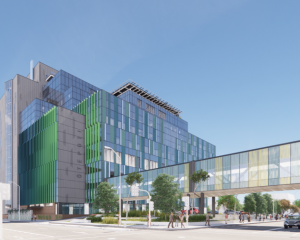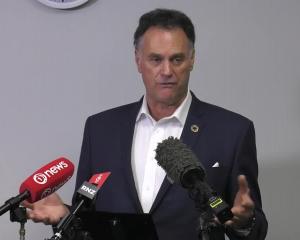
The changes would not be "a tweak around the margins" and would require "bold" decisions about reallocating funding within health services, SDHB executive director, strategic, primary and community, Lisa Gestro said.
The proposal, in the SDHB’s Southern primary and community care strategy and action plan, aims to take some funding away from acute care and redirect it to primary and community care and prevention, setting up a "hub and spoke" model of shared care. The proposal would have the SDHB increase the proportion of its funding for primary healthcare from 40% to 50%.
SDHB chief executive Chris Fleming said at a forum about the strategy in Cromwell yesterday the SDHB could not afford ‘‘to keep doing what we’ve been doing’’ and the shift in funding and thinking was vital.
"Every component [of the health system] needs to be shaken up ...
"It’s important to break down perceptions about limitations about what we can do."
The rebuild of the Dunedin Hospital was the "perfect" time to change the overall delivery of southern healthcare and set up a new model, Mr Fleming said.
Normally, about a third of the cost of a hospital rebuild would typically be spent annually after that operating the hospital, but it would be "ludicrous" to spend $500million a year operating the new $1.4billion Dunedin Hospital, he said.
"We need to think how can we change to a better future."
Mr Fleming said hospitals were holding on to patients "for too long" and the capability and performance of the primary and community sector needed to be strengthened. Examples of things that should be changed were moving more treatment from emergency departments to the primary sector, making more referrals back to primary healthcare and having more patients convalesce in rural hospitals rather than in Dunedin Hospital. People would also be further encouraged to manage their own wellbeing.
The new system would be a "far less siloed approach", and also see a single electronic healthcare record system developed to improve communication and information between health providers.
Consultation so far had shown issues for consumers such as access barriers to after hours care and mental health care, and rural patients having general access issues to healthcare. Maori also felt a lack of respect and cultural understanding.
Mr Fleming said some of the discussions and debate about the proposals would be "uncomfortable".
The SDHB was working to a tight timeframe with the strategy, and would develop an action plan by the end of November and do more consultation in December.
The 2018-19 year would be the first year of the action plan.
Hub and spoke model
• Ambulatory (or outpatient) care hubs would have physical or virtual bases.
• Hubs would feature shared care; network arrangements to community clinics and providers.
• Some new physical hubs might be built. Numbers to support separate hub still to be decided.
• System similar to some existing pockets in Otago and Southland, but would be developed into a formal model for entire region.












